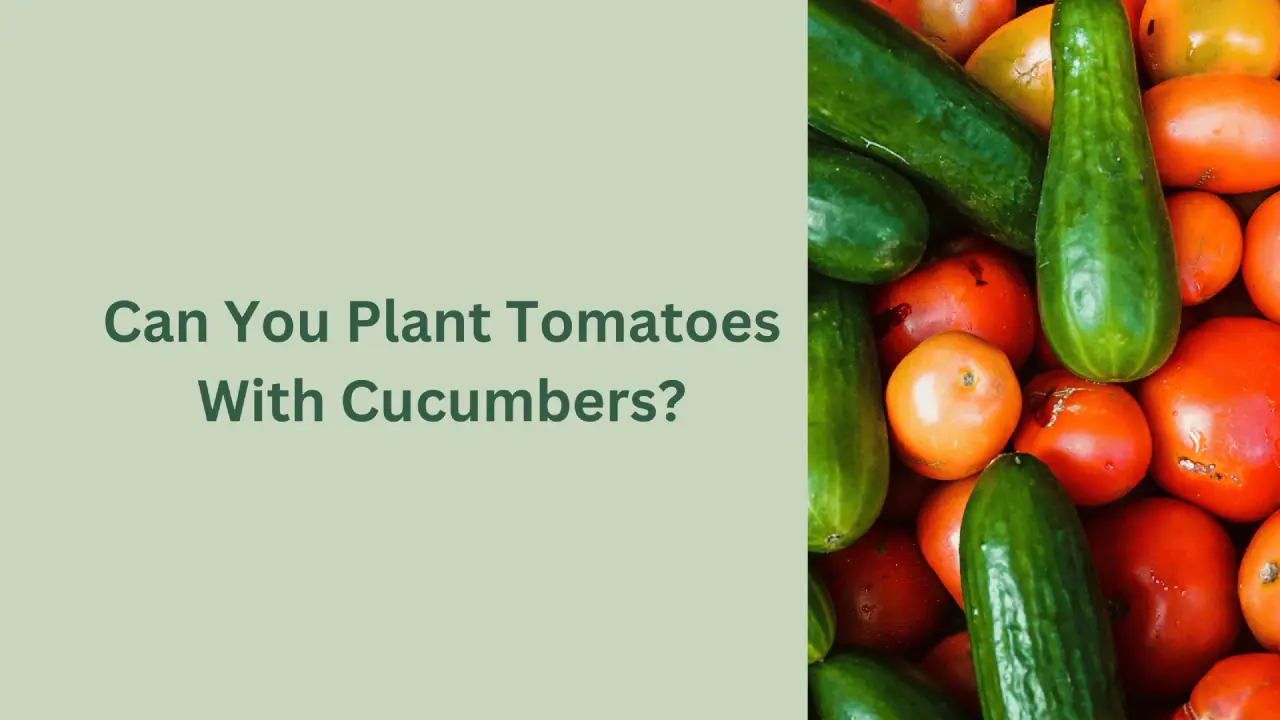Are you planning to plant tomatoes and cucumbers together but need clarification about the companionship of both plants? Companion planting is a good idea, but if the wrong plants are planted together, it can definitely harm both plants. Tomatoes and cucumbers make great salad companions, but are they really great plant companions?
Cucumber plants rarely fit as companion plants with any other plants. They belong to the cucurbit family, which are heavy feeders. They compete for nutrition in the soil with other plants, leading them to starvation.
If a good stake is not provided to cucumber plant, they grow large and become very difficult to manage because of their big size.
As a result, the companion plants get shaded and hardly get exposed to sunlight. Tomatoes also grow widely, and sometimes they are also disapproved of as companion plants.
In short, tomatoes and cucumbers can be planted together as companion plants as they have the same basic need to grow. They require the same amount of sunlight, soil condition, and watering techniques for their cultivation.
So how can you decide whether you can accompany cucumber with tomato? Read this article thoroughly to understand how both plants can be great companions in your garden.
What is Companion Planting? Explained
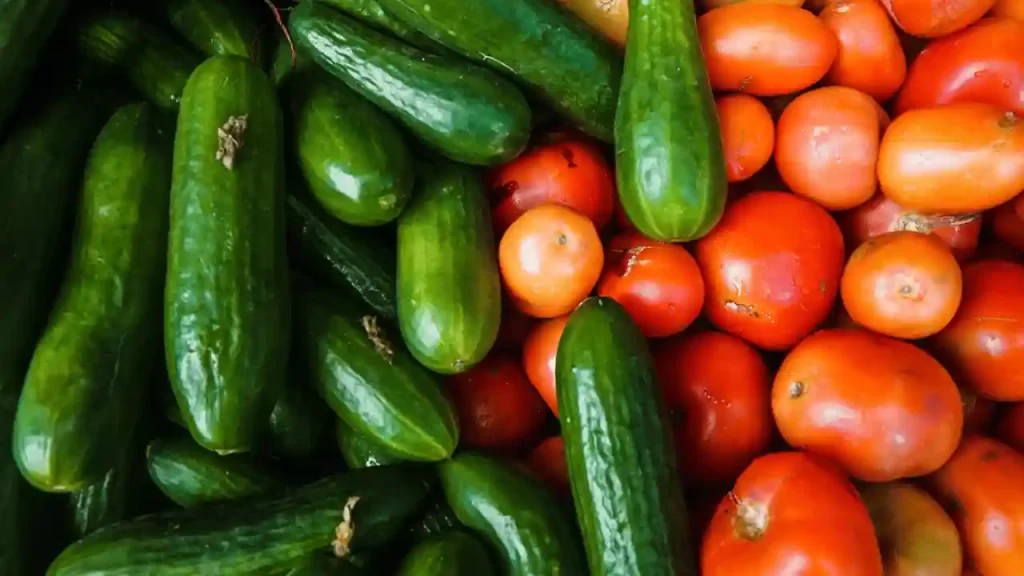
Companion planting is also called interplanting, widely used for both organic gardening and planting. In nature, you might have spotted various types of plants growing together.
If you are a nature lover, you can also feel the joy of plants growing beside each other if they support one another to grow well.
Many plants in nature can thrive with other plants if grown together. Many natural agents like plants, animals and beneficial predatory insects can support other plants in strengthening them, making the plant disease resistance.
Nowadays, only one vegetable and fruit type is grown in one garden. This prevents the plants from growing in their own way.
Large farmers and growers opt to grow this way only to utilize all the space available for one type of plant to increase their profit.
Reasons To Do Companion Planting
Growing companion plants does not have only one reason; it benefits plant species in many ways.
I have listed a few points below.
- Attracts pollinators which in turn increases the yield.
- Reduces the risk of weeds, pests and diseases.
- Enhances the flavor of the fruits.
- Maximizes space, especially when you have a small garden and manages sunlight exposure.
When different plants have the same basic requirements to grow and develop, it becomes easy for the grower to plant them together.
Tomatoes and cucumbers need the same soil and climatic conditions, sunlight and watering techniques to grow; it is simple to grow both plants together.
Yes, they can compete for vital nutrients, but if you manage to take care properly, nothing can beat them to growing perfectly and beautifully.
Growing Requirements
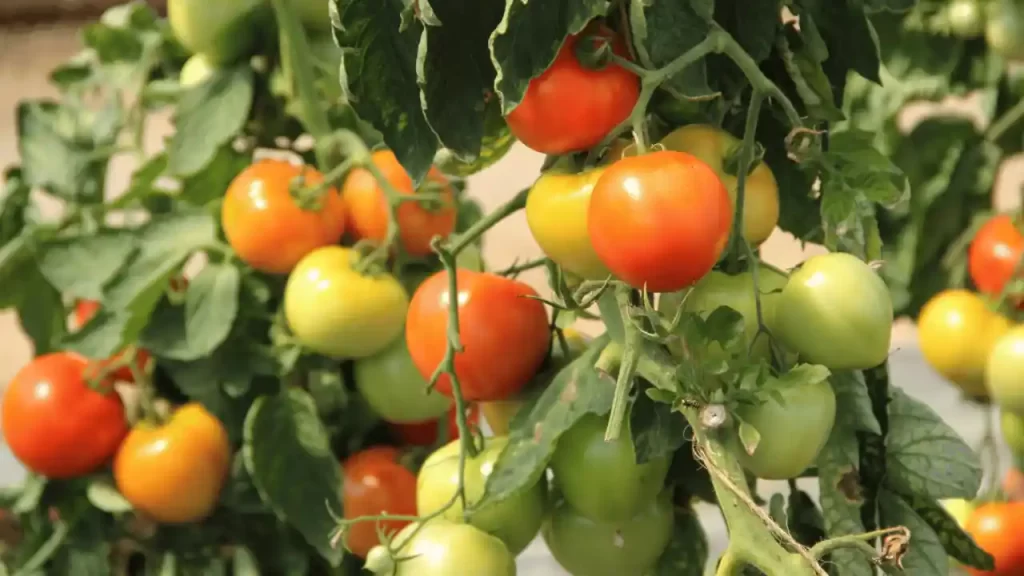
If you are planning to grow tomatoes and cucumbers together, you should ensure the main factors like sunlight, soil and watering.
If all these three factors are manageable, then it is a straightforward process to grow them successfully together.
When planting cucumbers and tomatoes together, you must know that cucumber seeds require high-nitrogen fertilizer in the holes before you transplant tomatoes. Tomatoes, however, do not necessitate added fertilizers. Various ways of companion planting these vegetables depend on their growth patterns.
Sunlight
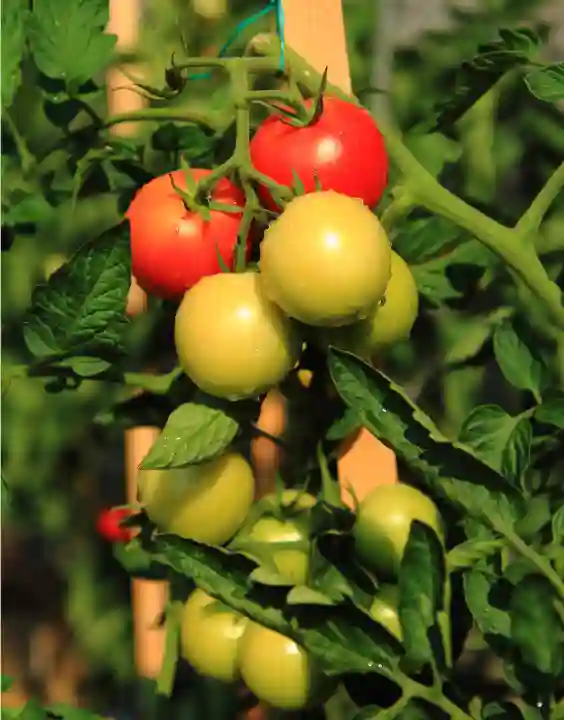
Both cucumbers and tomatoes are warm season crops. A Minimum 6 hours (per day) of direct exposure to sunlight promotes the healthy growth and development of the plants.
You can maximize the plant’s yield if they get 8-10 hours of direct exposure to sunlight every day. It would be quite beneficial if the plants received day sunlight and were protected from harsh afternoon sunlight.
In order to be sure of how much sunlight your plant is receiving per day, you can ensure this by measuring it. Just check when your plant is receiving sunlight and when it is shaded.
But it is very important to plant both plants so they won’t shade each other.
Quality of Soil
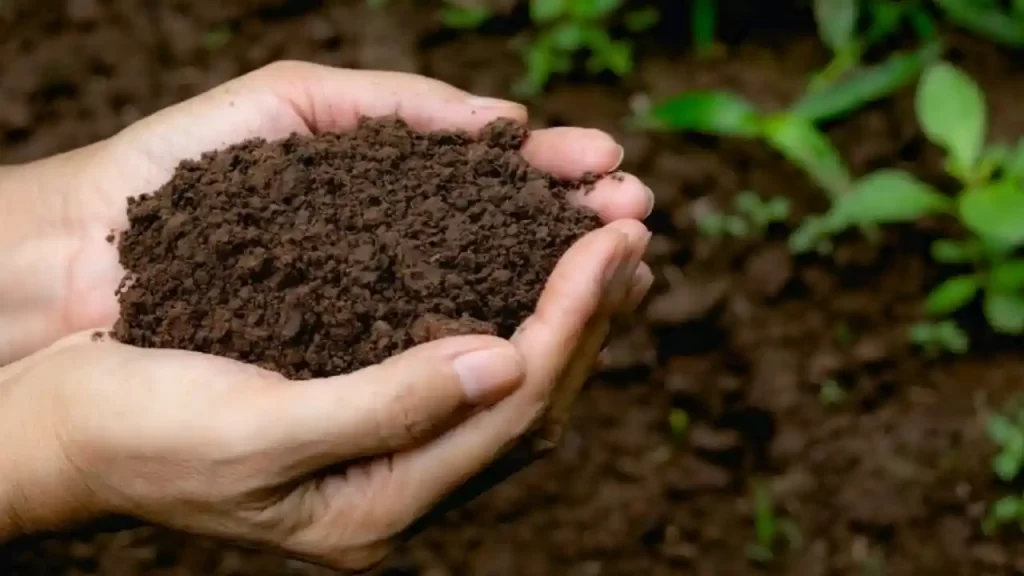
High-nutrient soil with the best drainage system is needed to thrive and increase the yield of tomatoes and cucumbers, as they are heavy feeders. Adding compost to the soil before one month of planting enhances the soil nutrients.
Using homemade compost is the best option. You can prepare it with manure or vermiculture. If you cannot prepare homemade compost, purchase organic compost from nurseries or garden centres. You should add it to the soil before plantation.
Keep using the right amount of good quality fertilizers in the soil during the growing season to maintain the nutrition level in the soil.
Both plants need a high and almost the same amount of nutrition in the soil to produce maximum yield. In such a scenario, the plants stop competing for nutrition with each other.
Manage to maintain good nutrition in the soil throughout the growing season. This would reduce the risk of competition for nutrition in the soil, and both tomato and cucumber plants grow efficiently.
At the beginning of the plantation, using compost and balanced fertilizers is the best. When plants begin to bloom, start using a fertilizer with a high amount of potassium and phosphorus and moderate amounts of nitrogen to maintain good nutrition in the soil. It results in maximizing flower and fruit production throughout the season.
Consistent Watering
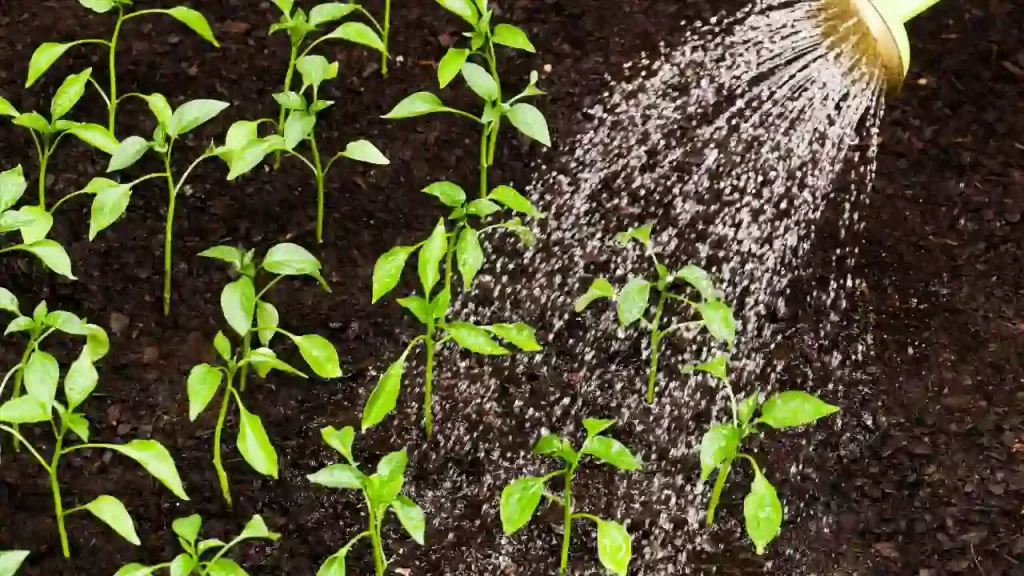
Consistent water supply is a very important factor; almost the same water supply is needed for both plants. Tomatoes love to be watered when the soil is dried out up to 1-2 inches in the soil. At the same time, cucumbers prefer a little moist soil to grow well.
Before watering the plants, you can check the soil’s moisture level by dipping your finger. If your finger comes out dry up to 2-3 inches, then it is the right time to water your plant, but if it is still moist, then wait and check the moisture level in the soil the next day. This would indicate the watering need for both plants.
Avoid overhead irrigation; instead, use soaker hoses or a drip system to water both plants. This would result in a consistent water supply to the plants.
Ensure to water the soil and not the leaves, a key to keeping your plants away from various diseases.
Planting Cucumbers and Tomatoes Together?
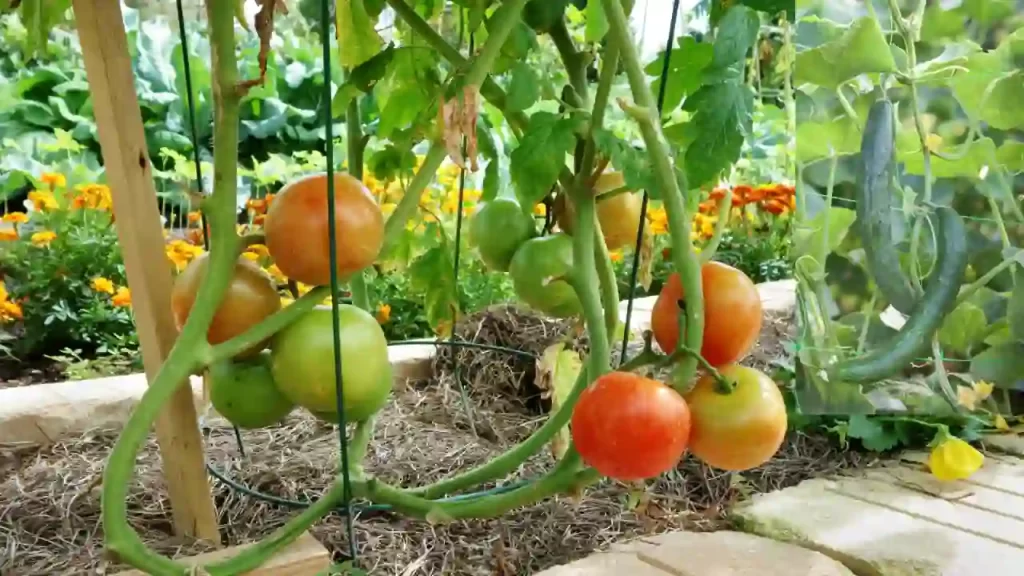
Now the question arises of how to place these two plants together on the ground. So it is mostly dependent on the varieties you have chosen to plant.
Tomatoes are of determinate and indeterminate varieties, whereas cucumbers are vining and bushing varieties.
The best combinations for the cucumbers and tomatoes plantation are:
- Vining cucumber and determinate varieties of tomatoes.
- Bushing cucumber with indeterminate tomato varieties.
But you can independently make any combination of your choice. It would grow fine. I have discussed all possible combinations of planting in this article.
Determinate Tomato Plant with a Vining Cucumber

Determinate tomatoes have a bush-like habit. So they are also called “bush” tomatoes. Their height is already determined, and they only grow up to a certain extent.
After that, it stops growing. But tomato cages and stakes are necessary to use to support the plants. They cannot grow anywhere like indeterminate tomatoes. It is best to pair the plant with vining cucumbers.
Plant both plants in such a way so that they never get shaded due to each other. It would be best to always plant cucumbers and tomatoes in the back side of your vegetable garden near the grilles and determinate tomatoes in the area where they can get direct exposure to sunlight.
Since determinate tomato plants are dwarf and grow up to a certain height, cucumber would manage to get the exposure to sunlight as it can grow high. And both the plants won’t get shaded.
Indeterminate Tomato with a Bushing Cucumber
The planting technique for indeterminate tomatoes and bushing cucumbers is the opposite of the one I discussed above.
To plant this combination, indeterminate tomatoes are planted at the back of the garden so that they can grow as high as possible. Bushing cucumber needs to be planted in an area where they can get direct exposure to sunlight. Thus both the plants would never shade each other and get enough sunlight.
Indeterminate Tomato with a Vining Cucumber
It is very challenging to plant indeterminate tomatoes with vining cucumbers, and you need to take a lot of care while planting this combination. You can take care of vining cucumber similarly to tomatoes. Planting such a combination is called “Diversified Planting”.
Most gardeners fail to manage adequate air circulation and exposure to sunlight facilities for the plants while cultivating indeterminate tomatoes and vining cucumbers together. But it is not challenging for experienced gardeners.
Plant vining cucumbers between the tomatoes. This helps to prevent weed suppression as it works as ground cover in your garden bed. But the worst part is that cucumbers cannot grow as big as they would have been if planted to grow vertically.
Determinate Tomato with a Bushing Cucumber
You can plant determinate tomatoes and bushing cucumbers side by side. This would reduce the risk of non-exposure to sunlight as none of the plants would grow taller.
Spacing of Plants

You should maintain spacing between the plants properly, irrespective of the combination you are planting. It would prevent crowding, and they would never compete for nutrients and water.
Position each plant at least 2-3 feet away from one another and rows should be spaced out by a minimum of 3-4 feet. Recommended spacing may vary depending on the combination of plants you are cultivating.
Generally, this recommended spacing helps to maintain proper air circulation for the plants in the front garden beds.
Also Read – Can You Plant Tomatoes and Potatoes Together
Potential Drawbacks of Interplanting Tomato Plants
Mainly there are three challenges which you may face while interplanting. I have discussed those points which are faced while planting different combinations of plants.
One Plant Shades the Other
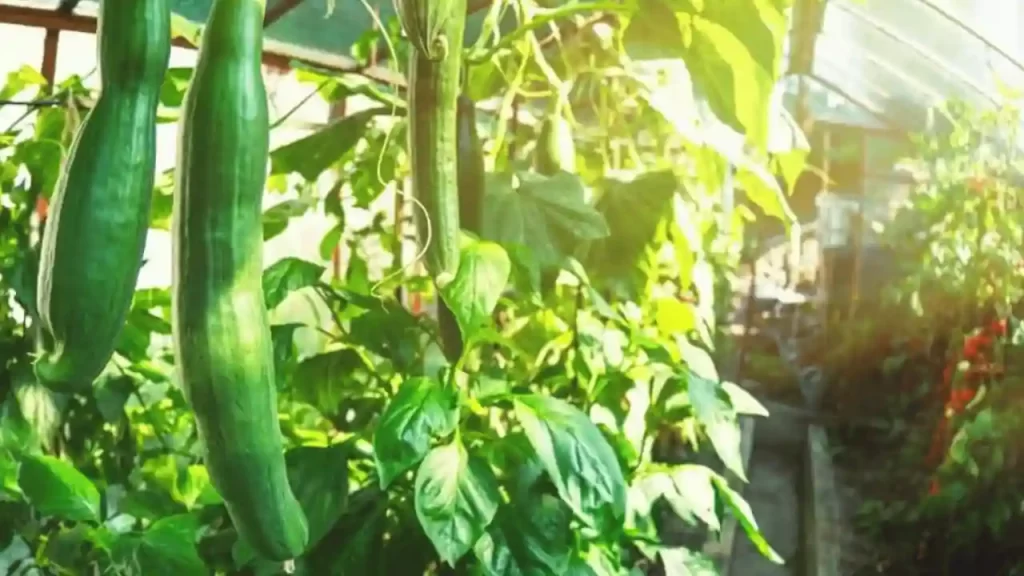
All plants should receive abundant sunlight exposure without fail. Keep in mind that tomato seedlings grow large very fast, and cucumber vines grow and spread on the vines in a short period of time.
Ensure to plant in such a way that none of them gets shaded due to one another.
Competition for Resources:
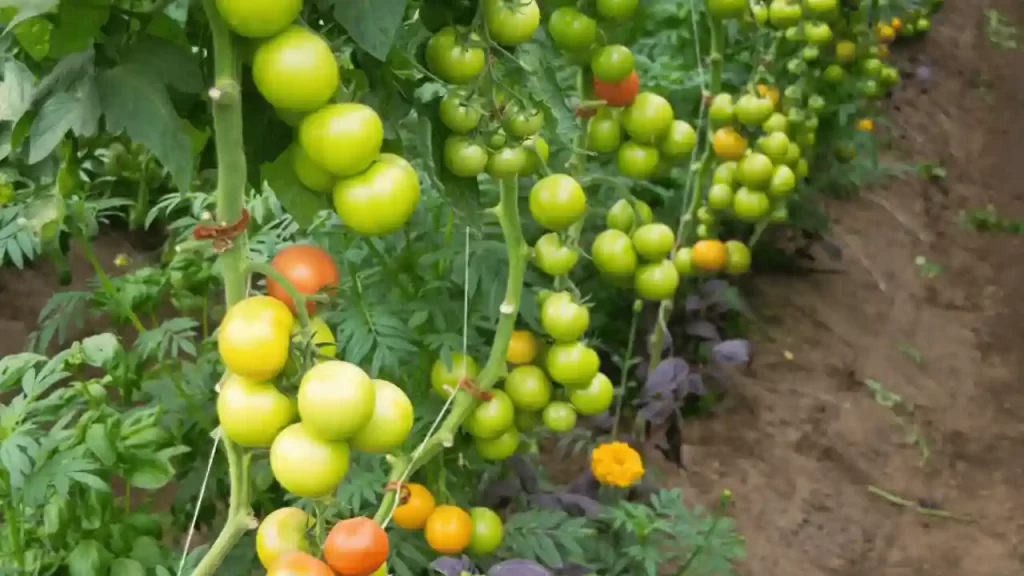
Never keep the resources limited. Both tomatoes and cucumbers are heavy feeders, and they would continue to compete for nutrition if the soil did not have adequate nutrition.
Thus it is best to keep consistent watering and ensure nutrient-rich soil to grow both plants together.
Increased Pest or Disease Problems
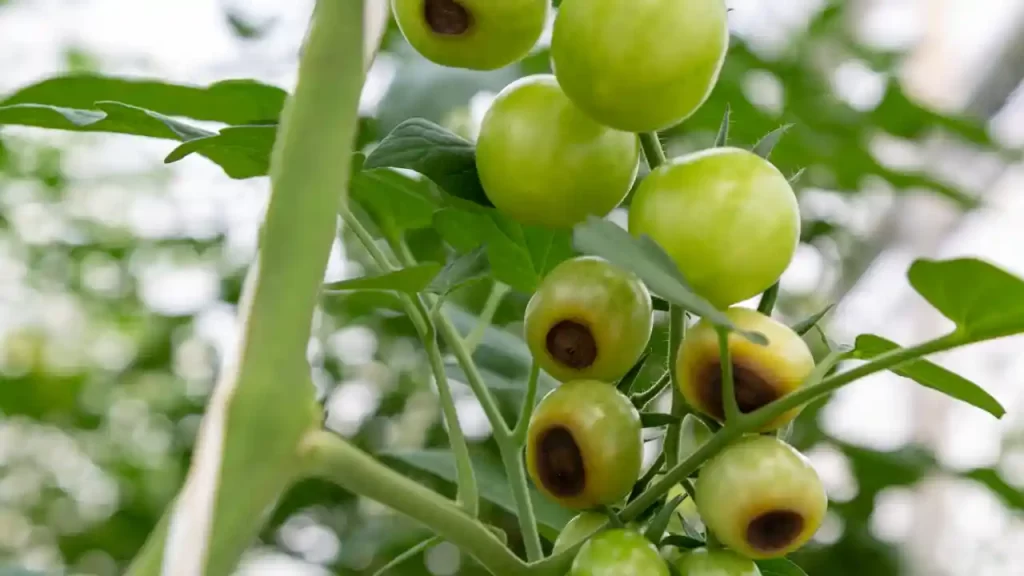
While planting both plants together, problems of Air Circulation in the plants may arise due to dense leaves, which in turn attract pests and diseases.
So maintain good spacing between the plants to reduce the risk of congested air circulation.
You can stake or use a cage when interpreting the plants. Timely and proper pruning also maintains good airflow in the plants.
Our Recommendation
If you want to plant different combinations of plants, just go ahead simply. Even if you have limited space, you can increase the yield with combination planting.
But opting for combination planting in a larger garden where you have enough space is mostly recommended.
- Stake Trellis: Train your cucumbers in such a way that it grows vertically on a trellis so that the stake can be reused.
- Soli Management: keep your soil fertilized, especially when your plant is flowering.
- Add other companion plants: Plant nasturtiums and marigolds to attract pollinators and increase yield.
- Avoid overhead watering: use soaker hoses or drip irrigation for planting any type of plant.
Summary
Planting cucumber and tomato together is possible by every means. So go ahead and begin combination and avoid planting cucumbers alone. This would keep your garden disease-free, and the yield can be increased limitlessly. Just ensure proper airflow, sunlight exposure and airflow for the plants, and you will grow tasty cucumber tomatoes together.
Frequently Asked Questions
Why should you not plant cucumbers near tomatoes?
Disease transmission is the main concern while planting both cucumbers and tomatoes together. Mainly many diseases are carried by tomato plants which can spread to cucumber plants if planted closely, and both cultivations are set at risk of destruction.
Some of the diseases which tomato plants carry are bacterial wilt, cucumber mosaic virus, early blight fungus, late blight fungus, phytophthora blight and more.
How far should cucumbers be from tomatoes?
Irrespective of the combination, you should properly maintain spacing between the plants. Maintaining at least 2-3 plants in a row at a distance of 3-4 feet or 18-24 inches between the plants is recommended. The spacing may vary based on the combination you have planned to plant. You can plant bush varieties of cucumber a little closer than vining cucumbers.
Will cucumbers climb a tomato cage?
Tomato cages are a popular option for gardeners and potted-plant enthusiasts, providing valuable support that keeps fragile harvests in excellent condition. Round tomato cages are especially well-suited to aiding the growth of fructuous and vining plants, such as tomatoes, hot peppers, cucumbers, squash & zucchini, amongst many others!
Can I use a tomato cage as a trellis?
If you’re looking to keep your tomato plants healthy and make harvesting easier, it’s time to consider providing support. Tomato cages, stakes and trellises are the most common solutions; however, don’t be afraid of thinking outside the box – there is an abundance of creative ideas out there!
